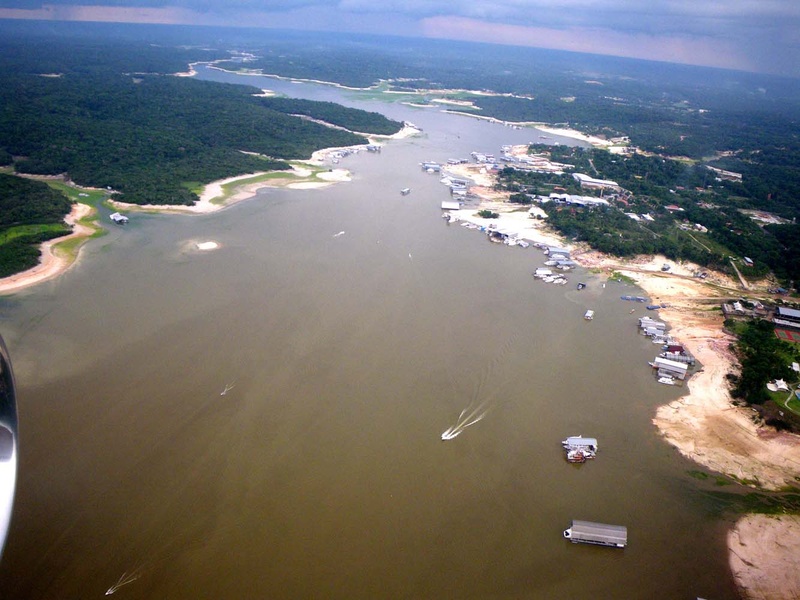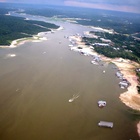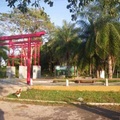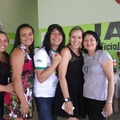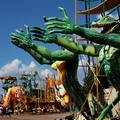"It happened! It happened! It really happened!"
It was May 2010 and I was at the JICA Yokohama Migration Museum in Yokohama, Kanagawa Prefecture. I had been selected to be dispatched to Manaus, Brazil as a senior volunteer for the Japanese community in 2010. Before being dispatched to South America, volunteers undergo three months of pre-dispatch training. I was living together with my colleagues who were going to work in Bolivia, Argentina, Paraguay, the Dominican Republic and Brazil at the JICA Yokohama Training Center. Every day I attended four to five hours of Portuguese classes, various lectures on the history of immigration and what heritage Japanese is, and every Friday I was vaccinated against rabies, yellow fever and other diseases, in preparation for my departure.
The Migration Museum located within the training center has a huge collection of data on Japanese immigrants before and after the war.
In fact, my grandfather, Tsuruta Kiyoshi, was born on April 23, 1902 in Fresno, California, USA. I'm ashamed to say that until I took the JICA training course, I had lived my life without really thinking about anything other than the fact that "my grandfather was born in America." However, as I studied the history of immigration here, I realized that "since he was born in America during the Meiji era, he must have been the son of immigrants, and I have immigrant blood flowing through my veins." One day, I decided to look into my roots.
My grandfather spent the war as a pastor in Hamamatsu City, and in his later years he worked as a missionary at a church in Iga-Ueno, Mie Prefecture. He passed away on June 30, 2001, at the age of 99, but he was a devoted and devout student until the very end.
While researching the history of churches on the American West Coast at the JICA Yokohama Migration Museum, I suddenly came across the name of Kiyoshi's father, my great-grandfather, Genshichi Tsuruta, in the books "The 85th Anniversary of the North American Mission" (published by the Southern California Christian Church Press) and "The 50-Year History of Japanese Christians in America." His name was recorded in the timeline as the first pastor of the Seattle Japanese Methodist Church (1904, Meiji 38).
I had no idea that my great-grandfather Genshichi was such an important person... I was so excited that I called my parents' home in Hamamatsu and my aunt in Tokyo that day to tell them the good news. I will never forget the moment I discovered my roots in the history of immigrants. I also feel like it was heaven's guidance that I was to spend several years of my life working to support the traditional education that Japanese immigrants have been preserving in the faraway land of Brazil.
Now, Hamamatsu City, Shizuoka Prefecture, where I was born and raised, is an industrial city lined with manufacturers of motorcycles, automobiles, musical instruments, and more. Due to an unprecedented boom in migrant workers from South America that began in the early 1980s, Hamamatsu City was flooded with more than 30,000 foreign workers at its peak. From this point on, Hamamatsu City, Shizuoka Prefecture, along with Ota City, Gunma Prefecture, and Toyota City, Aichi Prefecture, grew into one of Japan's leading cities with a large foreign population, to the point that South Americans refer to "Hama" not as "Yokohama" but as "Hama" as "Hamamatsu."
At the time, I was a musician in this town and was helped a lot by my foreign friends. They always showed me respect, whether it was helping me with songwriting, video production, or securing a live space, and I was really happy about that. I wondered if there was anything I could do in return for them, so I studied Japanese language education at Hamamatsu Gakuin University for a year while working, and gradually I was forced to face the discrimination and prejudice that they found themselves in. In the midst of all this, a certain thought started to grow in my heart.
"What kind of place is it that gave birth to the Brazilians in Hamamatsu? I want to see and feel the country with my own eyes. And I hope I can help them someday..."
With this in mind, I applied to be a JICA senior volunteer for Japanese communities. I was unsuccessful the first year, but after volunteering at Brazilian schools and community centers in the city, and helping Brazilian children with their high school entrance exams, I was accepted the second year. I was dispatched to Brazil from July 1, 2010.
The information about the placement that was sent along with the acceptance letter said that the place of placement was Manaus, Amazonas State. This was probably the Manaus I learned about in world geography class in junior high school ages ago. What kind of world was waiting for me in this city located in the tropical jungle? My heart was about to explode with anticipation, anxiety, and joy.
© 2015 Toshimi Tsuruta


